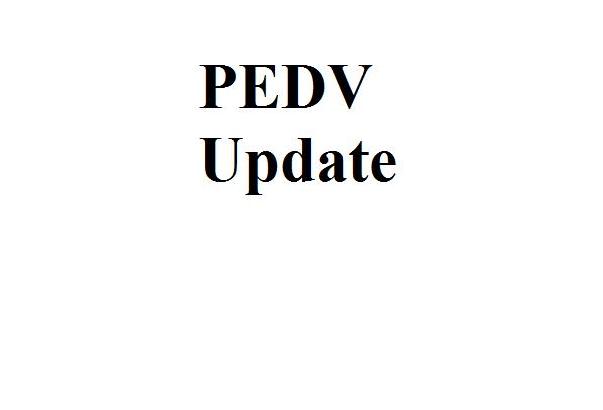Cases of Porcine Epidemic Diarrhea Virus Rise
July 16, 2013

As of July 8, there were more than 330 confirmed cases of porcine epidemic diarrhea (PED) virus in 15 states, with most of those in Iowa and Oklahoma, according to a report issued today by the National Pork Board.* (See most recent states/cases by clicking here and then on Number of New Cases Reported).
Transportation Biosecurity
While it's always wise to maintain good biosecurity, it's critical to do so at this time with PEDV confirmed in the United States. Researchers have already found the virus to be present on the surfaces of truck and animal chutes, so having strict transportation biosecurity is one of the best ways to help stop the spread of the virus. Talking with your veterinarian about developing transport biosecurity recommendations specifically for your operation is always the best course of action. Here are some general transportation biosecurity points to consider:
When going to another site or packing plant, wear coveralls and boots to prevent contamination in the cab of the trailer and to minimize exposure to other pigs
Establish a clean and dirty zone for farm and transport workers to follow during load-in and load-out
Clean and disinfect trailers after use; this is especially important when going to commingled sites like cull depots, packing plants or buying stations
Cleaning and disinfection involves:
Removal of dirty shavings, manure and other debris from the trailer
The use of a detergent soap can help to break down dried manure and speed up the wash process
After cleaning the trailer, use a disinfectant according to label directions to kill the virus
Make sure to wash and clean coveralls, boots and other equipment when transporting pigs
Clean the interior of the tractor cab to remove any dirt or shavings
Once the tractor and trailer is clean, park in a secure, clean location to dry away from other vehicle traffic
Resources pertaining to biosecurity and livestock production also can be found online on pork.org in the Transport Quality Assurance Handbook, and at the National Biosecurity Resource Center. Transporters can find guidance on boot disinfection, actively search for disinfectants by manufacturer, disinfectant class or by disease, or locate truck washes by state.
Like what you’re reading? Subscribe to the National Hog Farmer Weekly Wrap Up newsletter and get the latest news delivered right to your inbox every week!
On-Farm Biosecurity Tips
North Carolina swine veterinarian Matthew Turner offers some timely tips on what producers and transporters should do when it's time to move pigs:
Label and segregate chutes as much as possible.
If possible, have different chutes dedicated to loading outbound pigs and inbound pigs. Strictly isolating and monitoring incoming pigs can help protect the premises.
Continue to provide an area for drivers to discard their disposable coveralls and disposable boots.
Wash and disinfect all unloading chutes and driver areas as often as possible.
Wash all the fecal material off the chute and driver area first.
Apply a 2% phenol-based disinfectant (examples include: TekTrol, One Stroke Environ, Pheno-Tek II) to the areas where drivers walk to enter the chute, the chute from the point the driver enters to the top, and all areas where the chute contacts the truck.
Phenols will work the best because they are the most active when there is some organic material present.
A water medicator pump set to inject 2% can be installed and hooked up to a water hose beside the chute for ease of application.
If possible, make the driver contact area as small as possible. Rework facilities so the driver can enter the loading chute without having to walk through holding areas where he could be contaminated.
Require all trailers used to pick up animals be cleaned and disinfected before arrival and check that it is effectively happening
Provide coveralls and boots for employees to wear. These coveralls and boots should stay on the site and be washed routinely.
Routine boot washing and disinfection when crossing over areas where drivers have to walk (especially around the unloading chutes)
Consider utilizing the formal National Pork Board programs for Transport Quality Assurance and Pork Quality Assurance Plus.
These programs provide standardized, documentable training on animal handling, biosecurity practices, worker safety and food safety.
Additional PEDV Information and Resources:
PEDV Facts from the American Association of Swine Practitioners
PEDV News from Iowa State University's Center for Food Security and Public Health
Past Issues of Pork Checkoff's PEDV Update
* These statistics are based on veterinary diagnostic lab submissions. There may be clinical cases happening for which there are not veterinary diagnostic laboratory submissions, and there may be some error in identifying the states with infection due to incomplete data or the inability to follow-up on premises identification.
You might also like:
Cases of Porcine Epidemic Diarrhea Virus Rise
Internal Biosecurity: Key Link to Bar PEDV?
Diagnosing Porcine Epidemic Diarrhea (PED) Virus
Watch for PED Virus at Summer Fairs
You May Also Like



